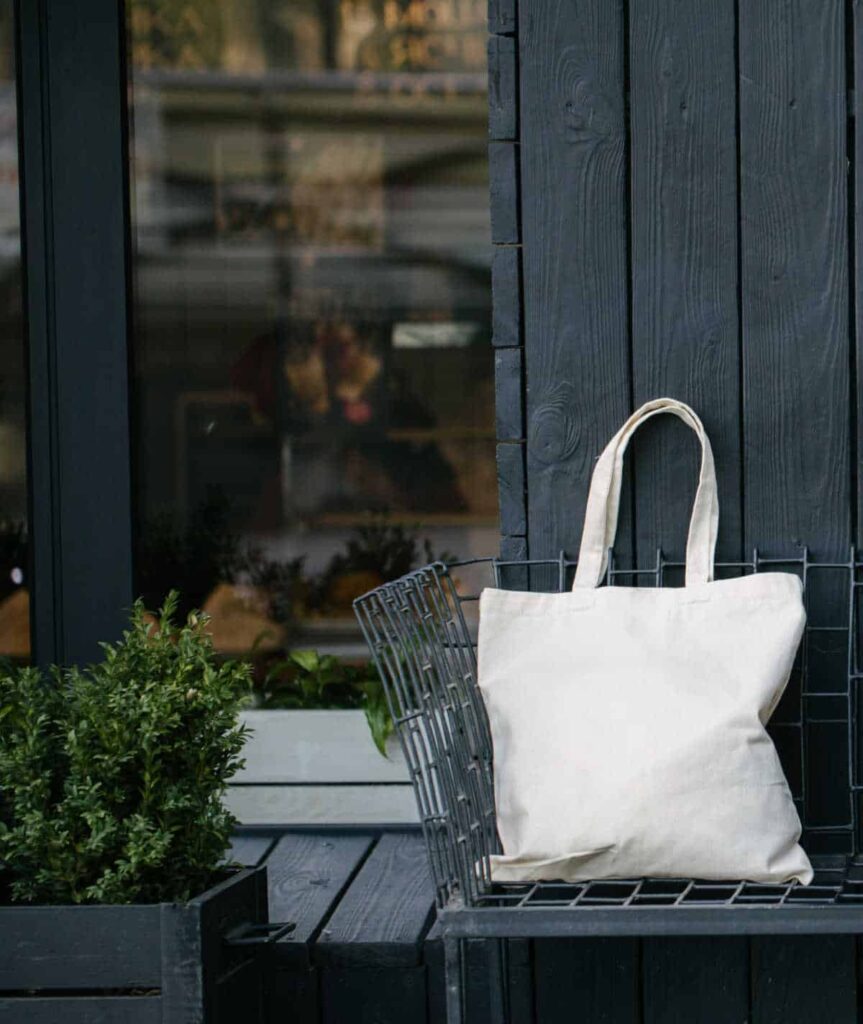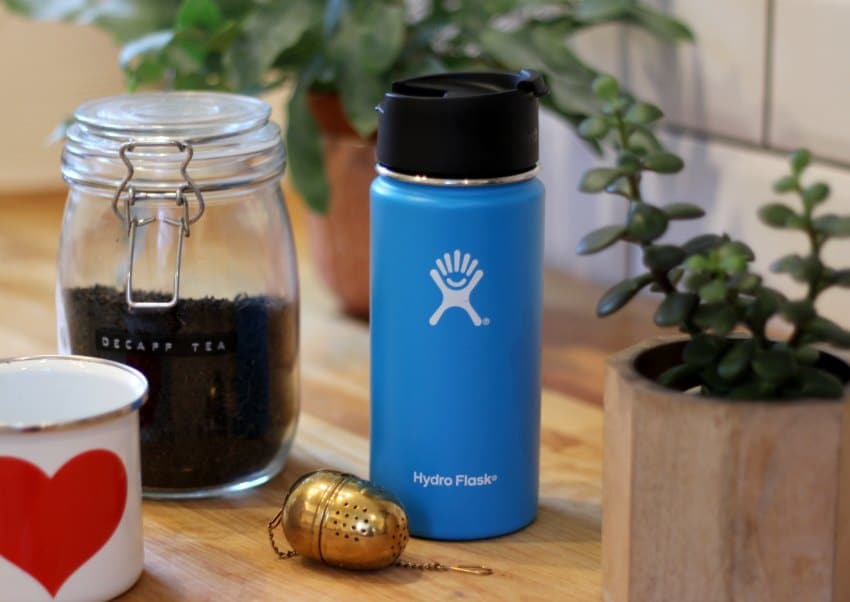What Is Modal Fabric & Is It Sustainable Or Eco-Friendly?
To support the running costs of Moral Fibres, this post contains affiliate links. This means Moral Fibres may earn a small commission, at no extra cost to readers, on items purchased through these links.
Wondering just how ethical and sustainable modal fabric is? I’ve done all the digging, to dish the dirt on whether this fabric is greenwash or the real deal.
Many brands – fast fashion and ethical fashion brands alike – make their clothes using modal fabric. This fabric is touted as a more environmentally conscious choice than polyester and other types of fabric, but just how sustainable is it?
It turns out, like many aspects of the fashion industry, that it’s complicated. Let’s take a look!
What Is Modal Fabric?

So what is modal fabric exactly?
Modal is a semi-synthetic fibre made from wood pulp sourced from beech trees. Despite being made from trees, it is not considered natural, like cotton or linen. Yet it is not considered truly synthetic, like plastic-based fibres, such as nylon or polyester.
Instead, modal falls somewhere in between. This is because the wood pulp requires extensive chemical processing before modal can be produced from it. This type of manufactured fibre is therefore often referred to as “regenerated cellulose.”
Modal is a type of viscose (also known as rayon). Viscose is a delicate fabric, that’s often referred to as artificial silk. The difference here is that modal goes through additional processing to make it much stronger than viscose.
Despite this strength, modal fabric is silky soft, breathable and very absorbent. Because of these properties, modal is often used to make underwear, activewear, and other types of clothing that hug your body.
Modal is also hard-wearing. It keeps its shape and finish, even when washed frequently. This means modal is less likely to shrink or pill compared to other types of fabric.
These impressive properties make modal a popular choice in the fashion industry. A “modal” fabric, if you will!
How Is Modal Fabric Made?
Modal is often considered an eco-friendly choice compared to other resource-intensive fabrics, as beech trees don’t need much water or chemical fertilisers to grow. This sounds good, but does modal actually do good? Let’s first take a look at how it’s made.
As I mentioned before, unlike synthetic fibres that are made from plastic, modal fabric is made from wood pulp sourced from beech trees.
This pulp is then processed with a special chemical solvent. This dissolves the pulp into a gloopy liquid, similar to the consistency of honey.
Once liquified, the solution is pumped through a thimble-shaped metal nozzle, called a spinneret. This nozzle has very fine holes in it. The wood pulp solution is forced through these holes – emerging from the spinneret as long fibres.
These fibres are then either spun into continuous strands – either as they are, or blended with other fibres, such as cotton or elastane – before being ready for use in the fabric and fashion industries.
Is Modal Fabric Environmentally Friendly or Sustainable?
So far, so good. We’ve established that, unlike polyester or nylon, modal doesn’t use any plastics. And it’s made from trees, which are a renewable resource.
But is this enough to make modal fabric sustainable or environmentally friendly?
I’m afraid not. Just because modal is made from wood pulp, this doesn’t make it a sustainable or environmentally friendly fabric choice by default.
Instead, it all comes down to individual manufacturers. Specifically, the processes and the source of the wood pulp that they choose to use. It’s these two key factors that determine if their modal fabric is eco-friendly or not.
This means that how the trees are sourced, and how the pulp is processed affects how sustainable any given modal fabric may be.
Tree Sourcing

One of the main factors that determine whether modal is eco-friendly comes down to whether the wood pulp used is sourced from sustainably managed forests, or not.
To ensure that the wood pulp is sourced from sustainable forests, modal manufacturers can source wood from certified woodlands.
Wood that is certified by the Forest Stewardship Council (FSC) means that it meets the “gold standard” of ethical production. The wood is harvested from forests or woodlands that are responsibly managed, socially beneficial, environmentally conscious, and economically viable.
Meanwhile, wood that is certified by the Programme for the Endorsement of Forest Certification (PEFC) ensures that timber and non-timber forest products are produced to the highest ecological, social and ethical standards.
If the wood pulp is sourced from FSC or PEFC-certified woodlands, then this is one indication that the modal fabric is more sustainable and environmentally friendly.
Modal fabric that is made from uncertified wood pulp means that your clothing may not be so eco-friendly. It could be contributing to illegal logging, habitat destruction, the loss of biodiversity and more.
Chemical Processing
As well as the source of the wood used, something else that needs to be considered is just how the modal fabric is produced.
As I mentioned before, during the production process, the wood pulp is processed with a solvent that dissolves the pulp into a liquid.
This is a chemical-heavy process, known as “xanthation”. This process often uses the highly toxic chemical carbon disulfide to dissolve the wood pulp into this gloopy soup.
Carbon disulfide is a neurotoxin, which can seriously harm garment workers and people living near viscose factories. The impacts of carbon disulfide exposure include mental health problems, blindness, and other severe health problems.
Xanthation is also a water-heavy process, which generates wastewater. Carbon disulfide can be found in this wastewater. If it’s not treated properly, it can contaminate local waterways, killing aquatic life.
There are ways to mitigate harm. Some manufacturers use a closed-loop process when making their modal. What this means is that the solvents and water used to create the modal are almost all fully recovered and reused. This greatly reduces the risk of environmental damage.
How Do We Make Sure Modal Fabric Is Made Responsibly?
If you are looking for sustainable and responsibly made modal fabric, it’s important to buy modal that is manufactured in line with environmental best practices. And it’s important to ensure that the wood used is sourced from sustainably managed forests.
Whilst it’s not always easy to access this information, some manufacturers are more transparent. Some are so proud of their environmental credentials that they are practically shouting about them. And quite rightly so. The more producers that show the right way to produce modal, the more consumers will demand change in the industry.
Lenzing AG, for example, is one of the most well-known producers of sustainable modal.
All of the wood products used by Lenzing AG are sourced from European PEFC or FSC-managed forests. Meanwhile, Lenzing AG has also developed pioneering manufacturing solutions that allow Lenzing AG to recover up to 95% of the production materials used. These are then reused over and over again, to avoid discharge into the environment.
To help distinguish this more sustainable modal from other types of modal available, Lenzing AG calls its modal TENCEL™ Modal. You’ll often see it referred to as Tencel. This isn’t a different type of fabric – it’s just the brand name for this particular modal fabric.
Confused? Don’t be. It’s similar to the way that certain items are known by the brand name rather than the product name. For example, we call sticky tape Sellotape, when Sellotape is just the brand name for a particular type of sticky tape. Similarly, we say we need to hoover when Hoover is just a brand name for a type of vacuum cleaner.
Want to know more? Check out my full guide to Tencel.
Is Modal More Environmentally Friendly Than Other Types of Viscose?
As well as viscose, modal belongs to the same family as lyocell – another type of regenerated cellulose. The regenerated cellulose family, if you will.
Whilst I would never ask you to rank your own family members, in the case of the regenerated cellulose family, it is perfectly acceptable to rank them!
Viscose is ranked the least environmentally friendly. This has a more chemically intense production process than modal, which isn’t well regulated. Viscose is also less durable and won’t last as long as modal or lyocell fabrics.
Conventional modal is ranked slightly better than viscose. And then TENCEL™ modal comes out as better than modal.
That being said, TENCEL™ modal isn’t the most sustainable of the regenerated cellulose family. For that, you have to look to its green-haloed sibling – TENCEL™ Lyocell.
TENCEL™ Lyocell is produced using more environmentally friendly solvents in a highly regulated closed-loop process. What this means is that the solvents and water used to create TENCEL™ Lyocell are recovered, and reused again.
In fact, according to Lenzing AG, when making TENCEL™ Lyocell the water is 100% recovered and recycled. Meanwhile, the solvent is almost all fully recovered and reused – with a recovery rate of more than 99.5%. This means that very very little solvent is wasted or discharged into waterways.
Other manufacturers make lyocell. To ensure your lyocell clothing has been made in an eco-friendly and responsible manner, then similar to modal, look for the TENCEL™ Lyocell trademark.
The Brands That Use TENCEL™ Modal or Lyocell Fabric
Lenzing AG only produces modal fabric – it doesn’t manufacture clothing. This means you have to look for fashion brands that use TENCEL™ Modal. To help you out, here are some of my favourite ethical clothing brands that use TENCEL™ modal or TENCEL™ Lyocell fabric.
Allbirds

Allbirds – the ethical shoe brand – has expanded into environmentally conscious clothing too. Its range of men’s, women’s, and kid’s clothing uses supersoft TENCEL™ in everything from t-shirts to trainers.
Ninety Percent
Ninety Percent is a London-based sustainable clothing label, that produces luxury ethical basics, such as organic cotton hoodies, and stylish tops crafted from sustainable materials such as TENCEL™.
It also has created a pioneering profit-sharing business model. This approach sees Ninety Percent sharing 90% of its profits between those who make the clothes and five charitable causes – including War Child UK, Wild Aid, and Big Life.
Thought Clothing

Thought Clothing makes easy-to-wear ethical clothes for men and women that are both sustainable and contemporary.
Thought’s approach to ethical fashion is one to be commended. The brand uses only certified natural and recycled fibres and fabrics – of which TENCEL™ is a key component – and makes its clothes ethically.
TenTree
Looking for outdoor or leisurewear made from TENCEL™? Check out TenTree – available in the UK via Wildbounds. As well as making men’s and women’s ethical clothing out of wood pulp, TenTree give back to nature, by supporting global reforestation projects. In fact, true to name, the brand plants 10 trees for every order placed.
Toms

As a certified BCorp, TOMS Shoes (available at Schuh) invests one-third of its profits into grassroots efforts, like organisations creating change at the local level. Its funding priorities lie in promoting mental health, ending gun violence, and increasing access to opportunity.
Check out its Earthwise range for TOMS’ most sustainable shoes, which are made with TENCEL™, organic cotton, hemp, or recycled polyester. Encouragingly, TOMS is also exploring an end-of-life recycling programme for its shoes.
The Bottom Line
Whilst modal fabric is made from natural materials, this doesn’t make it an eco-friendly fibre by default. Instead, we need to consider whether the source of that wood is sustainable or not. And then we also need to consider whether responsible and environmentally friendly manufacturing processes have been used or not.
Choose modal clothing made by transparent brands. Look for the specific TENCEL™ labelling or for brands that specify their fabric is made using sustainable sources and processes.
If there is no information available, assume that your modal clothing hasn’t been made with as much regard to the environment or the safety of garment workers.
To help bring about positive change in the fashion industry, you can ask the fashion brands in question why they don’t use sustainable modal. Fashion brands can change in the face of consumer pressure, so the more we ask these questions and demand transparency, the more the fashion industry can change.
Found this post useful? Please consider buying me a virtual coffee to help support the site’s running costs.




